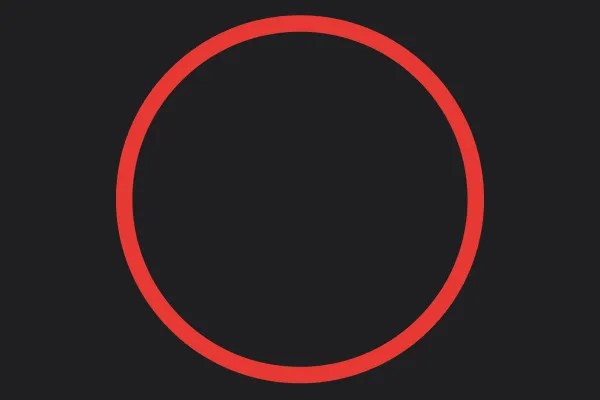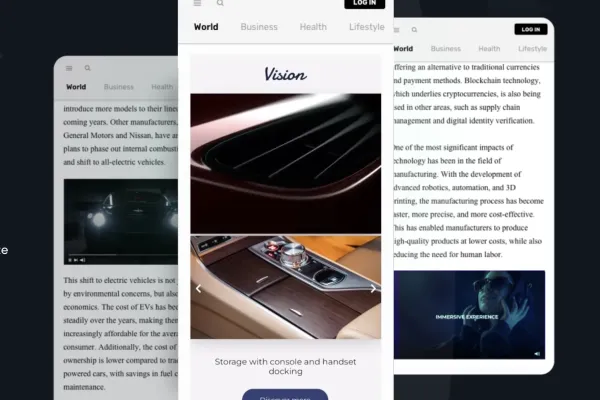Imagine scrolling through your favorite news website or social media feed, catching up on the latest updates and trending topics. As you navigate through the content, you’re likely to encounter two types of ads:
The first ad, a captivating image accompanied by a catchy headline, seamlessly blends with the surrounding articles, enticing you to explore further.
This is native advertising in action—subtle, engaging, and tailored to fit the user experience.
In contrast, as you continue scrolling, you notice a banner ad displayed prominently at the top of the page, flashing bold colors and promotional messages. This is a display ad—an overt, attention-grabbing approach to online advertising.
If you've spent more than 5 minutes on the internet, you’ve seen both these ads but what really is the difference between display ads and native advertising?
In this blog post, we'll take a closer look at native native advertising vs traditional display ads, their differences and how they tie into digital marketing strategies today.
READ MORE: What Is Native Advertising? Start With Our Ultimate Guide
Native Ads Blend In
Native advertising seamlessly adapts to its environment, blending in with the surrounding content to create a cohesive user experience. Unlike traditional display ads, which often disrupt the flow of a webpage, native ads are designed to feel like a natural part of the content.
Native ads come in various forms, including sponsored articles, promoted social media posts, and recommended content widgets.
The beauty of native advertising lies in its subtlety. Instead of bombarding users with overt sales pitches, native ads aim to provide value and relevance. By aligning with the tone and style of the platform they appear on, these ads can capture users' attention without interrupting their browsing experience.
READ MORE: NAI's Definition of Native Advertising
Display Ads Stand Out Loud and Clear
In stark contrast to native ads, display ads take a more direct approach to grabbing users' attention. These ads are characterized by their visual prominence—they often feature eye-catching graphics, bold headlines, and clear calls-to-action.
Display ads can be found in various formats, including banner ads, pop-ups, and interstitial ads.
While display ads may not blend in seamlessly with the content, they make up for it with their ability to command attention. They're especially effective for driving brand awareness and generating clicks, thanks to their bold and conspicuous nature.
READ MORE: Check Out the Best Native Advertising Platforms Right Now
Native Ads vs Display Ads
While perhaps the biggest difference between native ads vs display ads is whether or not the ad integrates into the surrounding content, there are also other differences that sets native advertising apart from traditional display ads.
- Integration: Native ads seamlessly integrate with the surrounding content, while display ads stand out as distinct elements on the page.
- Approach: Native ads take a softer, more subtle approach to advertising, focusing on providing value and relevance. Display ads, on the other hand, use bold visuals and clear messaging to grab attention.
- User Experience: Native ads enhance the user experience by blending with the content, whereas display ads may disrupt the browsing experience with their intrusive nature.
- Engagement: Native ads tend to drive higher engagement rates due to their contextual relevance, while display ads are more focused on immediate clicks and conversions.
READ MORE: Native Advertising for Mobile: Formats & Tips for Small Screens
Where Can I Expect the Best ROI?
In general, display ads may offer a more straightforward and cheaper solution for reaching a broad audience quickly. However, display ads are typically more intrusive and less integrated with the content, leading to higher levels of ad fatigue and banner blindness among users.
As a result, display ads may struggle to capture users' attention and drive meaningful interactions, potentially limiting their overall effectiveness and ROI.
With display ads, you typically pay based on Cost-per-Thousand Impressions (CPM), ranging from $1 to $20, depending on factors such as ad placement, audience targeting, and ad format.
Standard banner ads typically have a cost-per-click (CPC) ranging from $0.10 to $2.00, depending once again on ad size, placement, and audience targeting.
One of the key advantages of native ads is their ability to blend seamlessly with the surrounding content, making them less intrusive and more appealing to users.
As a result, native ads typically see higher click-through rates (CTR) and longer average engagement times compared to display ads.
This increased engagement can translate to greater brand awareness, customer loyalty, and ultimately, higher ROI.
And don't we all just love a high ROI?!
READ MORE: How Much Does Native Ads Really Cost? Find Out!
Incorporating Both Strategies into Your Marketing Mix
Both native advertising and display ads have their strengths and weaknesses, and marketers often incorporate elements of both into their campaigns.
Native advertising excels at building brand affinity and fostering long-term relationships with consumers, thanks to its non-intrusive approach. Display ads, on the other hand, are great for generating immediate clicks and conversions, making them ideal for short-term campaigns and promotional offers.
Ultimately, the key to success lies in finding the right balance between native advertising and display ads, tailoring your approach to fit your specific goals and target audience.
READ MORE: Spy On Your Competitors With: The Best Native Ads Spy Tools





